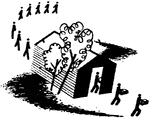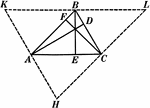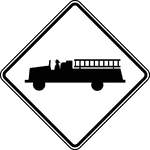
Fire Station, Black and White
Vehicular Traffic signs may be used to alert road users to locations where unexpected entries into the…
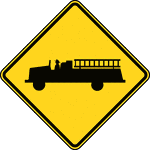
Fire Station, Color
Vehicular Traffic signs may be used to alert road users to locations where unexpected entries into the…
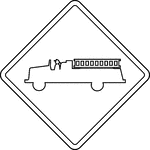
Fire Station, Outline
Vehicular Traffic signs may be used to alert road users to locations where unexpected entries into the…
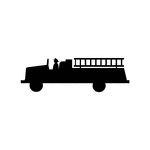
Fire Station, Silhouette
Vehicular Traffic signs may be used to alert road users to locations where unexpected entries into the…
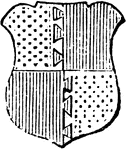
Quarterly Dove-Tailed
"Quarterly per pale dove-tailed, or and gules. DOVETAILED. A term borrowed from carpentry to show tinctures…

Earthworm Anatomy
The earthworms are also known as megadriles, in the families Tubificidae, Lumbriculidae, and Enchytraeidae.…

Forward March in Four File Formation
An illustration of military personnel forward marching in a four line formation.
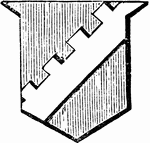
Bend Sinister Embattled
"Gules, a bend sinister embattled, argent. EMBATTLED. A line, formed like the battlements on a wall…
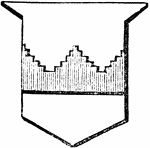
Fess Embattled Grady
"Argent, a fess gules, embattled grady. EMBATTLED GRADY. Where the battlements gradually rise one above…
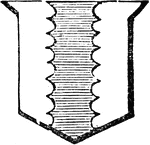
Pale Engrailed
"Argent, a pale azure engrailed. ENGRAILED. Any object being edged with small semi-circles, the points…
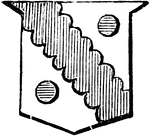
Bend Invected
"Argent, a bend gules, invected between two hurts. INVECTED. A line formed with small semicircles, with…

Various Stages of a Carpet Beetle
"Figure 9- Anthrenus scrofulariae, enlarged; the short line shows natural size. a, b, larvae; c, pupa;…
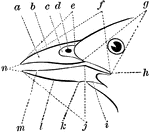
The Parts of a Bird Bill
"Fig. 26 - Parts of a Bill. a, side of upper mandible; b, culmen; c, nasal fossa; d, nostril; e(see…
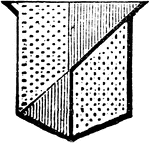
Parted Per Pale and Per Bend Sinister
"PARTED PER PALE AND PER BEND SINISTER Counterchanged, or and gules. PARTY or PARTED signifies divided,…
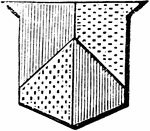
Parted Per Pale and Per Chevron
"PARTED PER PALE AND PER CHEVRON Gules and or, counter changed. PARTY or PARTED signifies divided, and…
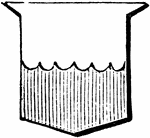
Party Per Fess Engrailed
"Party per fess, engrailed, argent and gules. PARTY PER FESS. A shield parted in the centre by an horizontal…
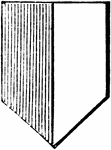
Party Per Pale
"Parted per pale, gules and argent. PARTY PER PALE. This signifies a shield parted by a perpendicular…
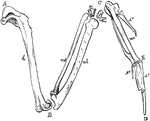
The Bones of the Right Wing of a Duck
"Fig 27. - Bones of the right wing of a duck, Clangula islandica, A, shoulder, omos; B, elbow, ancon;…
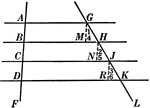
4 Parallel Lines Cut By 2 Transversals
Illustration used to prove the theorem "If three or more parallel lines intercept equal segments on…

Line Bisecting Trapezoid Sides
Illustration used to prove the theorem "The line bisecting one of the non parallel sides of a trapezoid…

Line Bisecting Side of a Triangle
Illustration used to prove "The line bisecting one side of a triangle and parallel to another side bisects…

Line Joining Midpoints on a Triangle
Illustration used to prove "The line joining the mid-points of two sides of a triangle is parallel to…

Line Divided Into Equal Parts
Illustration used to show how to divide a given straight line into any number of equal parts.
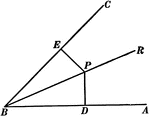
Perpendiculars To The Sides Of An Angle
Illustration used to show "The two perpendiculars to the sides of an angle from any point in its bisector…
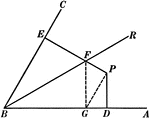
Perpendiculars To The Sides Of An Angle
Illustration used to show "The two perpendiculars to the sides of an angle from any point not in its…

Angle Bisectors In A Triangle
Illustration used to prove "The bisectors of the angles of a triangle are concurrent in a point which…

Perpendicular Bisectors In A Triangle
Illustration used to prove "The perpendicular bisectors of the sides of a triangle are concurrent in…

Medians In A Triangle
Illustration used to show "Any two medians of a triangle intersect each other in a trisection point…
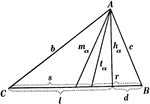
Parts Of A Triangle
Illustration used to show the various parts of a triangle: sides, angles, medians, altitudes, bisectors,…
Grain Spear
"Grains with Five Prongs. GRAIN. An iron instrument with four or more barbed points, and a line attached…

Lyle Gun
"Lyle Life-saving Gun. LYLE GUN, a bronze life-saving gun, designed by Captain D. A. Lyle of the United…

Flag of Comoros, 2009
Color flag of Comoros. Four equal horizontal bands of yellow (top), white, red, and blue, with a green…

Flag of Comoros, 2009
Black and white outline flag of Comoros. Four equal horizontal bands of yellow (top), white, red, and…

Flag of Syria, 2009
Color flag of Syria. Three equal horizontal bands of red (top), white, and black, colors associated…

Flag of Syria, 2009
Black and white outline flag of Syria. Three equal horizontal bands of red (top), white, and black,…
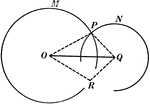
Circumferences of 2 Circles
Illustration used to prove "If two circumferences meet at a point which is not on their line of centers,…
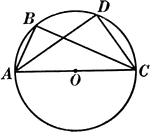
Angles Inscribed in the Same Segment Circle Proof
Illustration of a circle used to prove "All angles inscribed in the same segment are equal."

Obtuse Angles Inscribed in Circle Proof
Illustration of a circle used to prove "Any angle inscribed in a segment less than a semicircle is an…
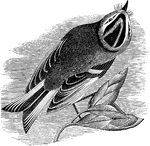
Golden Crested Kinglet
"Upper parts olive-green, more or less bright, sometimes rather olive-ashy, always brightest on the…
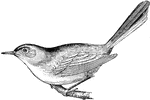
Blue-gray Gnat-catcher
"Grayish-blue, bluer on the crown, hoary on the rump, the forehead black, continuous with a black superciliary…
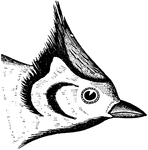
Bridled Titmouse
"Upper parts olivaceous-ash, wings and tail darker, edged with the color of the back, or even a brighter…

13 Star United States Flag, 1776
Black line illustration of a 13 Star United States flag. The original 13 stars represent the states…

20 Star United States Flag, 1818
Black line illustration of a 20 Star United States flag. The additional stars represent the states of…

21 Star United States Flag, 1819
Black line illustration of a 21 Star United States flag. The additional star represents the state of…

23 Star United States Flag, 1820
Black line illustration of a 23 Star United States flag. The additional stars represent the states of…

24 Star United States Flag, 1822
Black line illustration of a 24 Star United States flag. The additional star represents the state of…

25 Star United States Flag, 1836
Black line illustration of a 25 Star United States flag. The additional star represents the state of…

26 Star United States Flag, 1837
Black line illustration of a 26 Star United States flag. The additional star represents the state of…

28 Star United States Flag, 1846
Black line illustration of a 28 Star United States flag. The additional star represents the state of…

29 Star United States Flag, 1847
Black line illustration of a 29 Star United States flag. The additional star represents the state of…

30 Star United States Flag, 1848
Black line illustration of a 30 Star United States flag. The additional star represents the state of…

31 Star United States Flag, 1851
Black line illustration of a 31 Star United States flag. The additional star represents the state of…

32 Star United States Flag, 1858
Black line illustration of a 32 Star United States flag. The additional star represents the state of…

33 Star United States Flag, 1859
Black line illustration of a 33 Star United States flag. The additional star represents the state of…

34 Star United States Flag, 1861
Black line illustration of a 34 Star United States flag. The additional star represents the state of…
